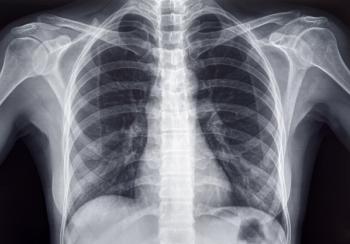
Patient-Reported Symptom Trends Could Help Guide Lung Cancer Trials and Care, Study Finds
Tracking the trajectory of symptoms may be an improvement over the traditional way of collecting patient-reported outcomes
Tracking how symptoms change over time in people with non-small cell lung cancer (NSCLC) may help predict survival and improve patient-centered care, according to new research out of the University of North Carolina. The study, published late last month in
“Patient-reported outcomes are noninvasive, patient-centered measures that reflect how patients feel and function during treatment,” said lead author
Although PROs are commonly collected in cancer trials to assess symptoms, function and quality of life, they have not been widely used to guide clinical decisions, particularly when they don’t align with imaging or biomarker results. PROs are also used in several kinds of value-based payment arrangements that factor into the quality scores that are a factor in determining how much provides get paid. Traditional methods often rely on snapshots at specific time points, which can miss subtle but important trends. To address this limitation, Zhou and her team developed a modeling framework that tracks symptom trajectories throughout the course of care.
The study builds on a
In the current study, the team examined longitudinal symptom data from 481 participants in the placebo arm of a phase 3 NSCLC trial. Using scores from the Lung Cancer Symptom Scale (LCSS), they modeled how symptoms progressed over time. Faster symptom worsening was linked to shorter survival, while greater symptom improvement was associated with longer survival. A machine learning model trained on these data achieved an area under the curve (AUC) of 0.78, indicating strong predictive accuracy.
The model allowed the researchers to account for the variability inherent in PRO data by separating individual differences, subgroup patterns, and measurement noise. The exponential model chosen reflected the typical clinical course of NSCLC, with gradual symptom progression early in the disease and a faster decline in later stages.
Importantly, the researchers found that baseline symptom severity alone did not predict survival. Instead, it was the rate and direction of symptom change that carried prognostic value.
A fuller picture
In their paper, Zhou and her colleagues proposed that this approach could make cancer care more adaptive and efficient. PRO data could help determine whether new or worsening symptoms are likely to be temporary or signs of disease progression, which in turn could inform decisions about imaging, treatment changes or closer monitoring. By integrating PRO dynamics into cancer care, the researchers concluded, clinicians may gain a fuller picture of patient health and treatment response.
The authors acknowledged several limitations. They used average scores across nine symptoms, which may have masked important trends in individual symptom changes. Also, many participants in the placebo group reported improvements over time—possibly due to lingering effects from earlier treatments or a placebo effect. But, because data from the treatment arm of the trial were not available, they were unable to assess how active therapy might affect symptom progression or validate their model across both groups. Future research may benefit from more detailed symptom-level data and broader access to participant-level clinical trial datasets.
Despite these limitations, the researchers said their framework could help refine cancer care and clinical trial design. By identifying meaningful symptom patterns earlier, clinicians may be better able to determine when a patient needs imaging, treatment adjustments, or closer monitoring. It could also support more efficient trial scheduling and data collection strategies. Furthermore, the approach may also help integrate patient experiences more fully into cancer care, offering a clearer view of how individuals respond to disease and treatment over time.
“By applying this method to non–small cell lung cancer, we successfully predicted patient survival based on their reported experiences—paving the way for more personalized, patient-centric treatment strategies in oncology,” Zhou said.
Newsletter
Get the latest industry news, event updates, and more from Managed healthcare Executive.


















































